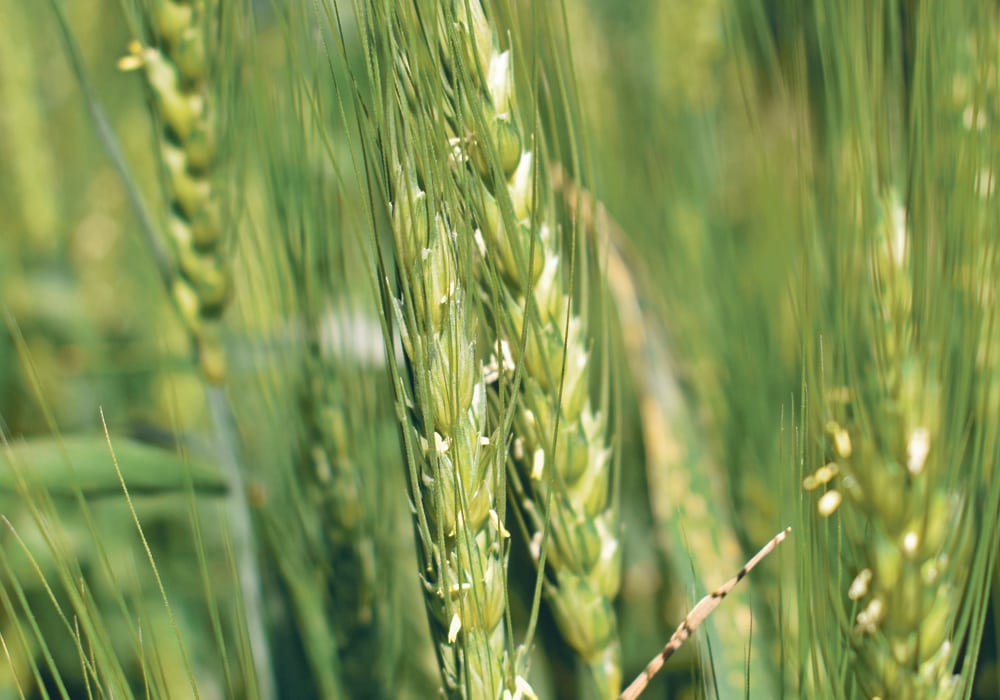The hot, dry weather slashing production prospects in much of northern Europe has helped the Minneapolis hard red wheat price to recover back to levels it traded at for much of the last crop year.
However, to climb much higher would require help from a rally in other grains, and at least for now, that does not appear to be in the cards because U.S. corn and soybeans are in good shape.
Wheat was the dull member of the three major grains for the past several years because of large global supply, but the run of generally good weather for the crop could not last forever.
Read Also

Critical growing season is ahead for soybeans
What the weather turns out to be in the United States is going to have a significant impact on Canadian producers’ prices
Forecaster Strategie Grains has been cutting back its forecast of European wheat production almost weekly because of the drought, which hit Germany particularly hard. On Aug. 9, Strategie Grains pegged the soft wheat crop at 127.7 million tonnes, down from 130 million in its forecast in late July and 132.4 million in early July.
The current forecast would mean a crop down 10 percent from last year.
The following day, the U.S. Department of Agriculture came out with its own monthly production forecasts. It lowered world wheat production by 6.6 million tonnes from the previous month to 729.63 million tonnes, mostly because of cuts to European production.
Compared to last year when bin-busting wheat crops were harvested in Russia, the USDA’s global wheat forecast is down 28.4 million tonnes or 2.9 percent. The decline marks the first time since 2012-13 that there has not been a year-over-year increase in wheat production.
Russia’s wheat crop this year is back to a more normal 68 million tonnes, down from 85 million last year.
The USDA did not cut its wheat production outlook for Australia or for Canada this month, even though there are problems in both countries.
It pegged Australia’s wheat crop at 22 million tonnes, but eastern Australia’s states are suffering drought, and production is expected to be severely affected. Western Australia’s crop, however, is in good shape. Grain and forage are being shipped from Western Australia east to New South Wales and Queensland.
Private forecasters in Australia expect that the wheat crop there might not reach 20 million tonnes, two million less than the current USDA forecast.
The USDA put Canada’s all wheat crop at 32.5 million tonnes, but Agriculture Canada’s forecast is 30.6 million and the recent hot dry weather in much of the southern Prairies likely has trimmed back yields since that forecast was made.
These problems in wheat crops around the world helped the Minneapolis spring wheat December new crop futures to recover from the sharp $1 per bushel sell-off in June. They are now back to the US$6-$6.50 range that they traded in for much of 2017-18.
However, we have not seen the type of price spike that we saw in July 2017 when drought in the northern U.S. Plains caused spring wheat to briefly rally above $8.
This year the U.S. spring wheat crop is in good condition.
Indeed, the generally good shape of all American crops this summer is acting as a limit across the market.
The weekly crop condition ratings for corn, soybeans and spring wheat are all better than the long-term average.
Last week, the USDA raised its forecast for its domestic corn and soybean harvests above trade expectations, including record high average yield forecasts.
The report hammered soybean and corn futures lower, and wheat was caught in the downdraft, even though the report confirmed a smaller global wheat crop.
Soybean futures were also weighed down by the U.S.-China trade tensions that are at fever pitch.
Soybean’s troubles also weighed down canola, even though the global supply and demand outlook for the oilseed is tightening.
Because of the dry weather in Germany, the USDA pegged the rapeseed crop in Europe at 19.2 million tonnes, down from 22.15 million last year. It raised European rapeseed imports by a modest 200,000 tonnes to 4.4 million tonnes, with most of that coming from the Black Sea region.
The USDA sees global rapeseed production falling 72.15 million tonnes from 74.71 million last year.
It also expects that China will see a significant increase in rapeseed imports to 5.3 million tonnes from 4.65 million last crop year.
The USDA expects much of that will come from Canada because it forecasts that canola exports from this country will be 11.6 million tonnes, up from 11 million last crop year. The forecasts are similar to Agriculture Canada’s outlook.
Of course, the increased exports will depend on Canada’s railways being able to meet the demand for rail cars from the agriculture industry.

















